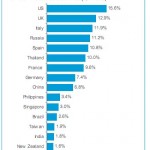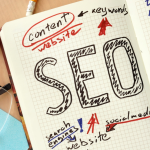Even after being a major part of the content marketing segment, SEO seems to be a factor that is hard for you to ignore, no matter how old it might get. If you are aiming to get a high rank on Google and other search engines, then you cannot work without SEO. As per one noteworthy survey of smaller to midsized digitalized marketing agencies, around 32% of the agencies have reported that Search Engine Optimization helps in generating more revenue than any of the other points.
As technology advances and the search engine continue to evolve and adapt the newly structured algorithms, it might be difficult for the veteran SEO workers to keep track of the changes made available. So, that means you are actually overlooking some of the significant SEO value associated with the site. If you are actually missing the major SEO strategies, then you are literally costing the business some serious revenues now. If you think that your money is getting wasted, then you might have to check out some points to avoid such instances from taking place.
The deal with Google Adwords is that you can aim for the best requirements now.
Time to Compress Images and Increase Page Speed:
Images form one of the major culprits for slowing down the page’s loading time. On an average scale, it has been found out that images make up for around 68% of the total weight of the web page. So, it is quite huge, to say the least!
- Even though many people know that the speed of the page is highly important for the ranking of SEO, in terms of optimization, the image size is mostly overlooked.
- One major reason behind it is that if you are actually loading or reloading the website on own mobile device or computer, the page is subject to being cached.
- The main function of a web cache is to store the data of a page on a temporary basis for reducing the server lag through page speed.
- So, in other words, it can be clearly stated that once the page gets loaded and cached, the server will end up with a cached version for saving time while returning later to bring up the site.
- It is true that caching once every week is a good idea if you are planning to increase the fetched response time, but it can give SEO inadvertently the impression that website is getting loaded faster than what it actually is.
- In case, you are not checking the speed of the page from the outside host device or with page loading measure tool, you might not be able to notice that the images are here causing delays at the end of users.
- When around 53% of the people have abandoned a website taking more than 3 seconds to load, then this is a mistake that can ruin your business growth to a new level completely.
- The probability of just abandoning a page can get increased by around 32% after just the initial three seconds.
- So, it is fair to say that if the images are actually slowing down your loading time, and even by a single second, then you might be frustrating the users and increasing your present bounce rate. But, you have a simple fix for that. For improving the loading time and increasing retention rates and user satisfaction, you have to evaluate the speed of the page, and then resize the current problem images.
Evaluating the Current Page Speeds:
The market houses multiple free tools, which you can always use for testing the speed of the page. The PageSpeed Insights tool from Google is great for not just measuring the loading time for both desktop and mobile, but for identifying the causes resulting in speed delay, which will include images too.
- Images are mainly contributing to this lag in loading speed. So, this tool will help in creating a list of all those images, which are contributing in this slower loading speed and get to optimize the images now.
- When you are actually planning to optimize the page, it is vital to take a special interest in just making them mobile-friendly in nature. With the rollout of the mobile first index from Google, the mobile-friendly websites might rank at a higher scale than those, which are not at all optimized.
- Depending on the surveys performed and the analysis, the landing page of Target has an average speed of around 2.2 seconds and optimization is good at 88 out of 100.
- It might not be a perfect score for PageSpeed Insights it can be targeted as quite close. With some of the minor tweaks in the images, you can always spike up the speed of the page to a completely new level.
Other Tools That You Might Want to Consider for a Change:
Another interesting page loading measuring tool that you can always rely on has to be GTMetrix, which will be here to identify the current problematic areas well.
- The main aim of this tool is to help uncovering every one of the issues that your site is suffering from and then end up recommending some solutions to help you out with the fixing over here.
- This form of service might go a bit more in-depth in nature with PageSpeed Insights. If you are suffering from images, which are causing slower loading times, then those will get listed out here.
- The page speed reports from RankPay based GTMetrix will help in reducing the bounce rate by around 20% and then increase the speed of the page by 20%.
It is always important for you to give some effort and time for analyzing and fixing the present page speed based issues. It is not just designed to help in ranking better in the current SERPs but can further help in improving the UX experience to a completely new level over here. Using the measuring tools can make this task a lot easier for you than what you have anticipated.












Leave a Reply